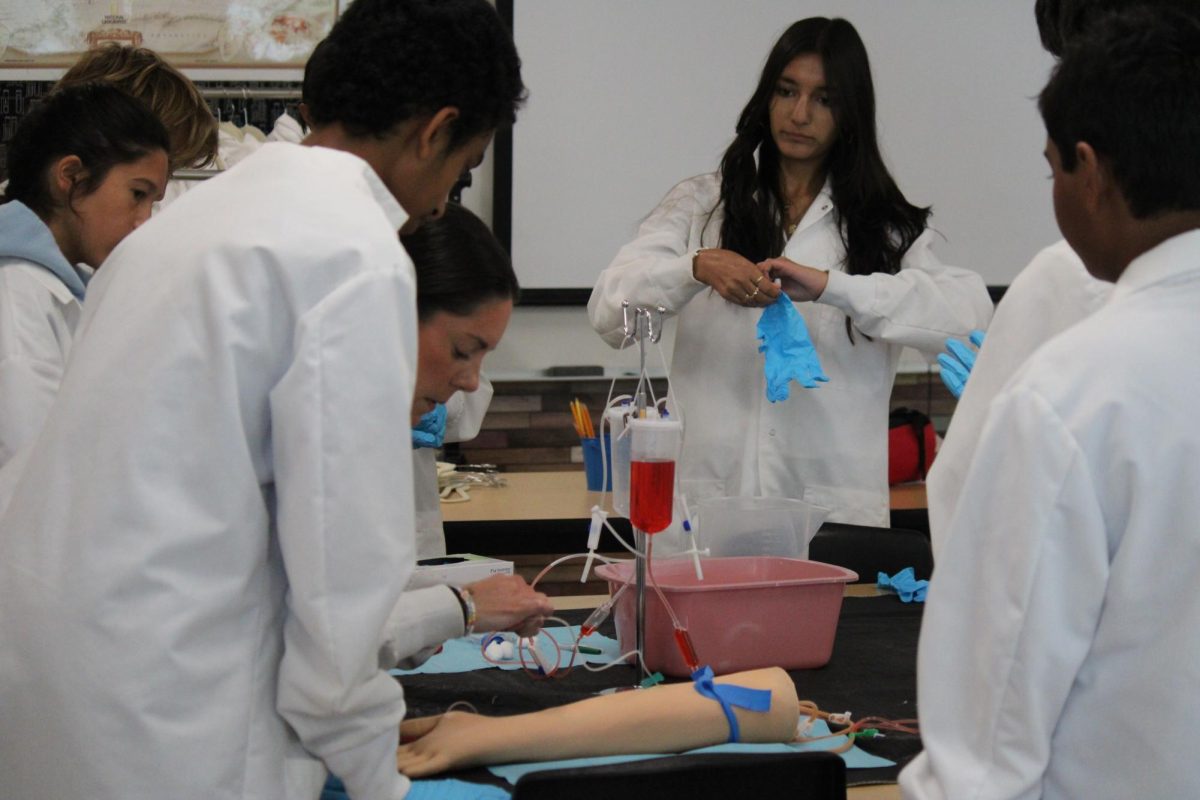On March 13, the Poway Unified School Board passed Resolution 57-2025, which will lay off 100 positions within the district. The board also approved a second resolution to rearrange the district office structure, allowing them to find room for the cuts. The board plans to eliminate 10 management positions, 70 classified non-management positions, and 26 certificated non-management positions. As of March 14, staff members have already received hand-delivered letters disclosing that their position will be terminated until further notice.
PUSD has fallen deeply into a budget shortfall. The revenue coming in is not enough to pay next year’s projected expenses, the district now needs to cut $13 million. The layoffs are one of the actions being taken to achieve this. The district is estimating that cutting these positions will save $10 million for the 2025-26 school year. Support personnel are the primary people at risk of being let go. This includes counselors, psychologists, preschool teachers, language instructional assistants, and many others. Additionally, there will be some cuts in managing positions.
“If PUSD doesn’t cut $13 million in the next two years, we would fall under the required financial threshold,” PUSD Board Member David Cheng said. “We would be in violation, and then the state could start a takeover process.”
During a takeover, state officials replace the existing board members, and this often leads to changes in policies, school operations, and use of budget.
In 2021, the federal government distributed $23.4 billion to all California school districts. Each school received this one-time sum to help with COVID-19-related issues.
“Unfortunately, a lot of school districts, including Poway, took the one-time money and hired permanent staff,” Cheng said. “Once the money ran out, there was no funding to pay for the permanent staff that were added.”
PUSD, and many other California schools, hired new counselors and support staff. The extra staff was to accommodate any issues that students might be having due to the aftermath of COVID-19.
In addition to these new permanent staff members who were hired with temporary funds, PUSD stated that a large portion of the deficit is due to reduced state funding, declining enrollment, and increased cost of materials and school supplies.
During the meeting, another resolution was approved to reorganize the district office structure. This will cut 10 management positions. The current structure consists of five various branches of services: business, learning, personnel, student, and tech and innovation services. The new structure will downsize the departments from five to three divisions. The three divisions are set to be personnel support services, learning support services, and business support services. The district expects this will help reduce expenses and the amount of faculty being cut on school campuses.
The newest hires are the most at risk of being let go. Classified employees are going to make up the majority of those let go, including administrative specialists, aquatics coordinators, student services assistants, and planning coordinators. Certificated employees, such as counselors, language instructors, and education specialists will follow.
While identifying who will be laid off, the board went through three phases of elimination. First, the district took into account retirements and resignations, followed by the expiration of temporary contracts; If more people are choosing to retire or step away from their positions, PUSD won’t have to lay off as many people. The final phase was to evaluate their current employees.
They ranked their current employees using a point system to find out who would be laid off. Based on the amount of experience and time spent in the position, they would be awarded points. The more points, the less likely they are to be let go.
“Certainly, once the district is able to stop operating in a deficit and is starting to have a balanced budget moving forward, there are a lot of options we can look at including bringing some of these positions back,” Cheng said.
Cheng said that in the past some positions have been cut and then reinstated, layoffs are something that happens often in school districts, just not typically in as high a quantity as they are now.
There have been many concerns expressed by community members, parents, and faculty on how the cuts will negatively impact students. During the school board meeting on March 13, board members were met with many people who thought the layoffs would cause students to fall behind; the board assured them that they would minimize the impact on students and their learning environment.
According to an article written by Cal Matters, 47% of California high school students met or exceeded the expectations for ELA standardized testing in 2024. This was a 0.4% increase from the previous year, however, it was a significant drop from 2019, in which 51.1% of students met or exceeded expectations.
“Given the multitude of students of California, and the diversity, even small improvements are significant,” said Lucrecia Santibanez, an education professor at UCLA.
Despite the current trend of increasing test scores, lots of local parents are worried that the cuts are going to bring the scores back down.
Additionally, there are concerns about maintaining safety in schools. The safety and preparedness coordinator position is at risk of being laid off. This position is in charge of monitoring what students are searching on their computers. They watch for keywords that could indicate if the student is contemplating suicide or threatening the school. They are also responsible for facilitating drills and ensuring that students and faculty are prepared for emergencies.
According to an article from Career Prep High School, “Studies have shown a clear correlation between a safe learning environment and a higher academic achievement. When students feel secure, they can focus more on their studies without the distraction of fear or anxiety.”
There are lots of potential issues that the layoffs present, however the district is confident they will prevent declines in safety or education.
“We don’t anticipate cutting any services,” Cheng said. “Basically, the district will have to get the same amount of work done with fewer people. It’s going to be a lot harder, but the district will do whatever it takes.”





![Jolie Baylon (12), Stella Phelan (12), Danica Reed (11), and Julianne Diaz (11) [left to right] stunt with clinic participants at halftime, Sept. 5. Sixty elementary- and middle-schoolers performed.](https://wvnexus.org/wp-content/uploads/2025/09/IMG_1948-800x1200.png)
